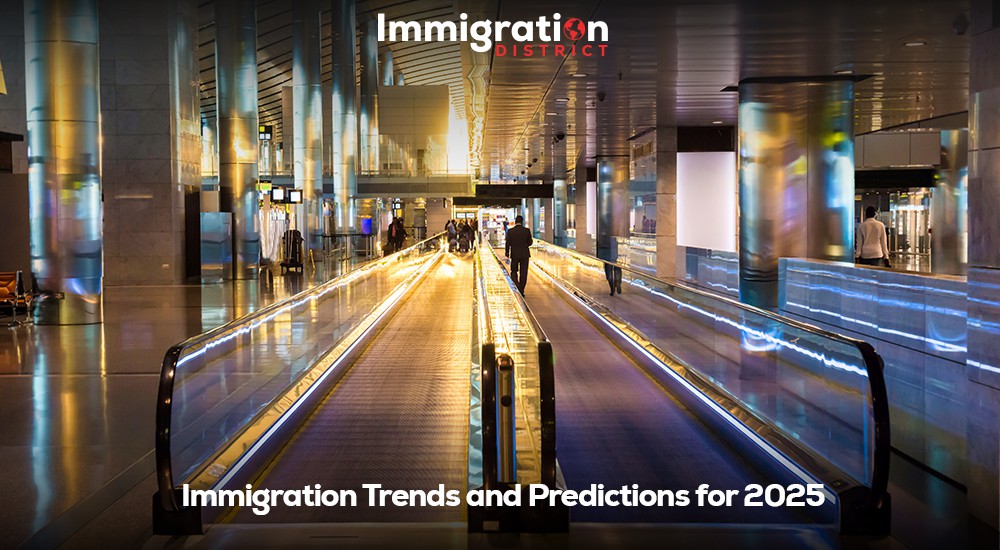As we go well into the second decade of the 21st century, immigration still remains one of the dynamic definers of the economy, society, or cultural tapestries. With changing dynamics across the world in politics, economies, and environment, it is very important for policymakers, businesses, and individuals to get an understanding of what the future might look like in immigration matters.
1. Global increase in mobility
One of the most significant trends we foresee by 2025 is an increase in global mobility. The better the technology and the smoother the communication, the more people can easily move to any other place for work, education, or other purposes. This trend will be driven by:
- Remote Work Opportunities: The present pandemic of COVID-19 has accelerated the acceptance of remote work. Most companies have now accepted the trend and are open to hiring from all parts across the globe. Now, this significantly adds to those who are willing to relocate either for job opportunities or just a serene living condition.
- Educational Pursuits: International education will always attract students from diverse countries. We also expect that by the year 2025, most students will be seeking advanced education abroad, especially in science, technology, engineering, and mathematics, among other courses, as countries vie to have the best available source of such skills.
2. Immigration Policy Changes
Against this background of immigration challenge, several host governments will make substantial changes in immigration policy by 2025. With demographic and labor market pressures mounting, governments are expected to introduce more flexible and adaptive immigration frameworks. Leading changes will encompass the following:
- Pathways to Citizenship: Most countries might try to bring a new or revised pathway, which includes citizenship, for high-skilled migrant workers, refugees, and their family members to resolve the labor shortages and enhance social integration.
- Focus on Skilled Migration: More and more countries are going to focus on skilled migration to fulfill their labor market shortages. Points-based immigration systems would be the new rules, where a candidate is awarded points based on their skills, their education, and work experience.
3. Climate Migration
Climate change is becoming undeniable, and its effect on migration patterns will be very deep by 2025. With extreme weather events and rising sea levels displacing communities, we foresee:
- More Displacement: Places most vulnerable to climate change—like low-lying areas near the seashore and places that constantly suffer from drought—are overflowing with climate refugees. Countries will therefore have to craft policies to deal with the influx of people seeking safety and stability.
- International Cooperation: The challenge of climate migration will unquestionably call for international cooperation. International conventions and protocols are anticipated to address the protection of rights and the provision of necessary assistance to the climate-displaced.
4. Technological Developments in Migration Processes
Technology is bound to be a disruptor when it comes to the future of migration. By 2025, we shall see:
- Digital Immigration Solutions: Digital platforms on visas, application, monitoring, and processing will help integrate the immigration processes in a bid to save the time the migrants take in the processes and will save the experience that the migrants have.
- Data-Driven Decision Making: Governments will pull more information and analytics in policymaking on immigration. The governments will now get better-informed decisions going with the facts to match their labor markets or any demographic process by scrutinizing trends and patterns.
5. The Rise of Regional Migration
Given the changing pattern of international migration, we predict an increase in the regional flows. The flows will be fueled by economic opportunities, political stability, and cultural affinities that encourage people to reap their fortunes in regional settings. This may mainly come in the form of:
- Intra-Regional Agreements: Countries in some regions may have agreements that allow free movement of people. For example, the European Union has already embraced policies that permit free movement of people within the member states, and such models may be replicated in other regions also.
- Cultural Exchange: More migration at the regional level will result in more significant cultural exchange and integration, thus making the societies more livelier and multicolored.
Conclusion
By 2025, the future of immigration is almost definitely going to be shaped by five forces: global mobility, changing policy, climate challenges, technological advancement, and regional dynamics. Within these trends, we will need adaptive governments, businesses, and communities that can prepare for the chances and challenges ahead. In building an approach to immigration for a forward-looking world, we move towards a more inclusive and prosperous world for all.
